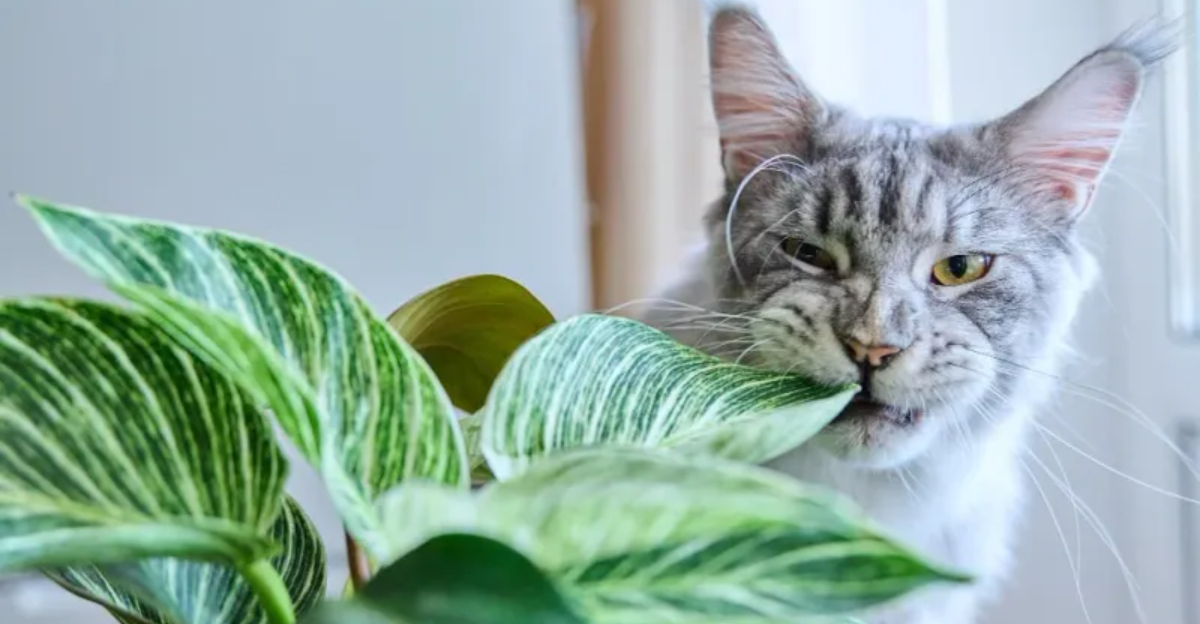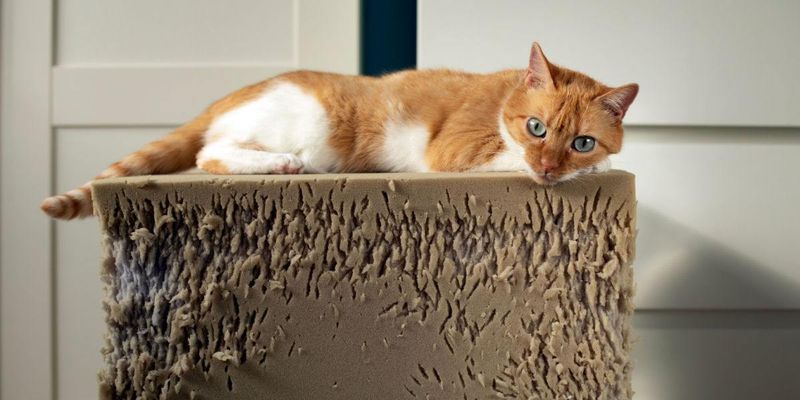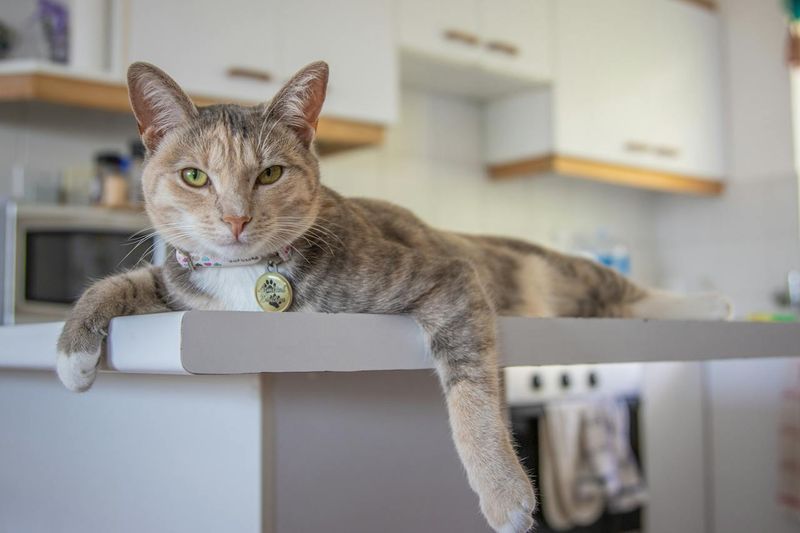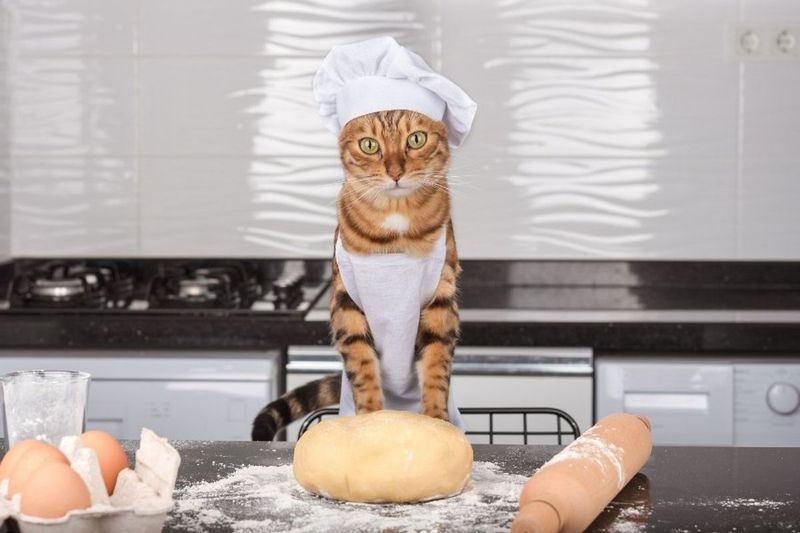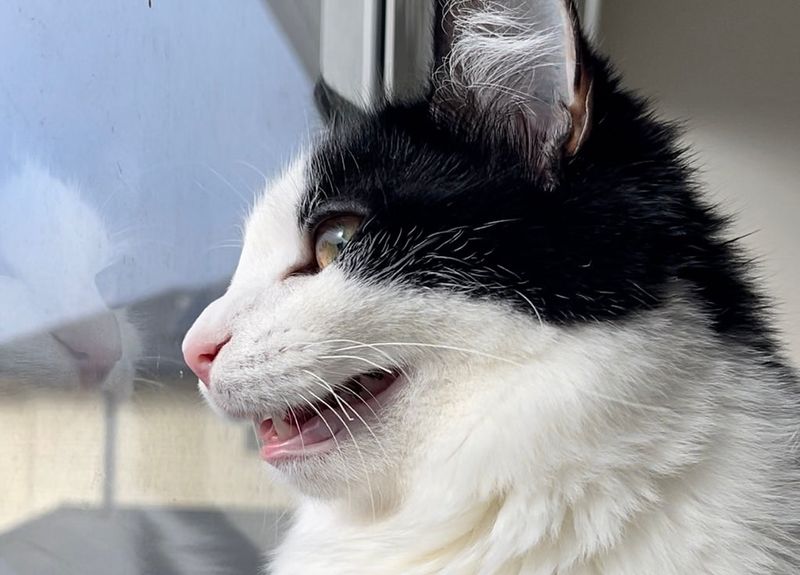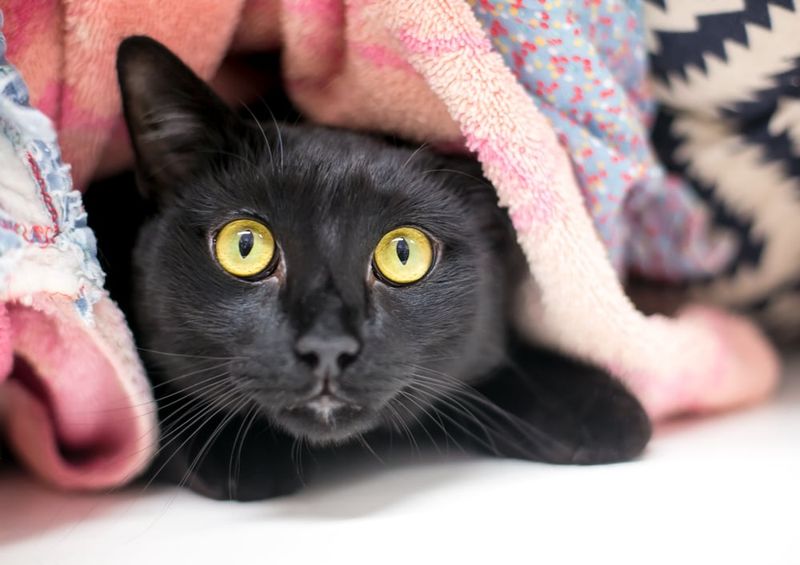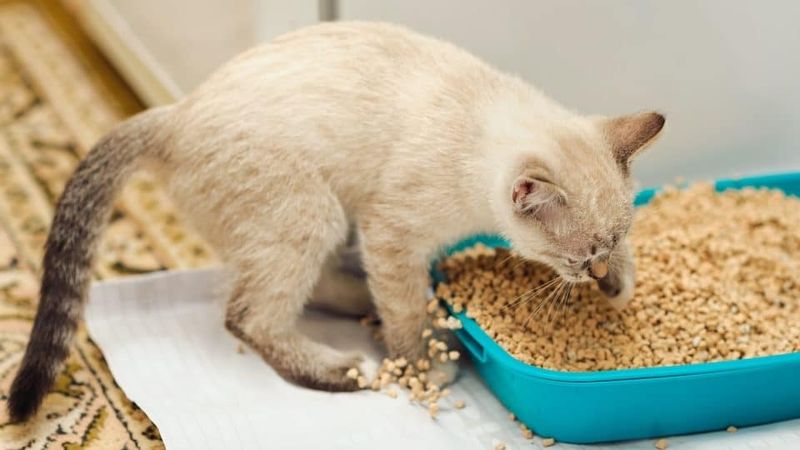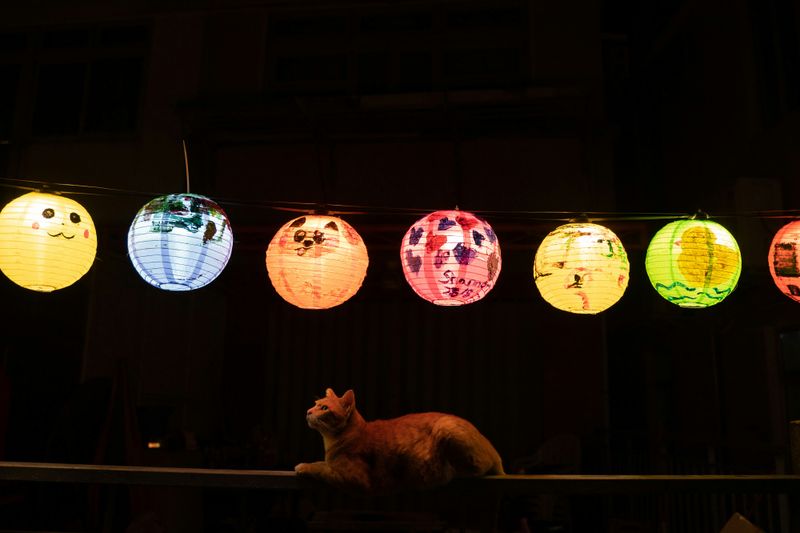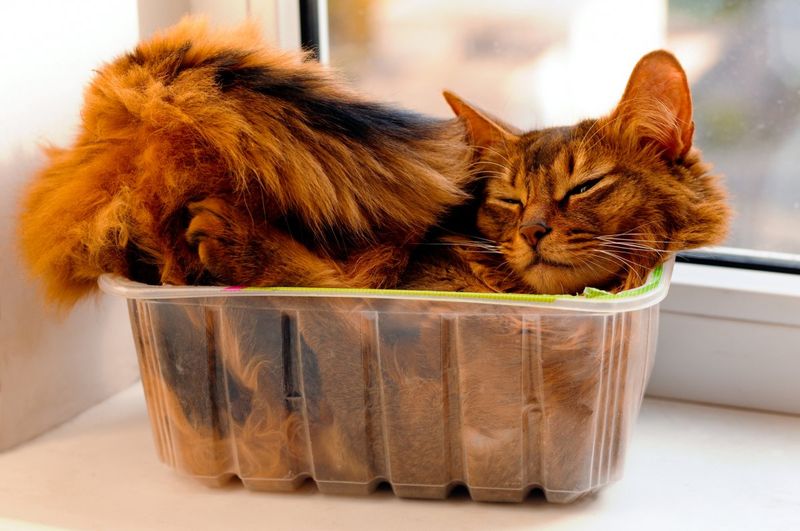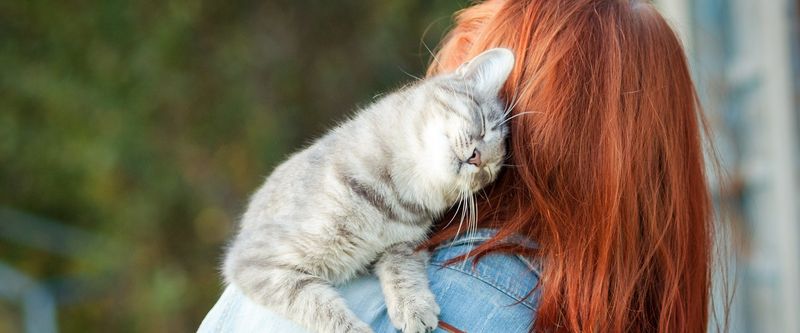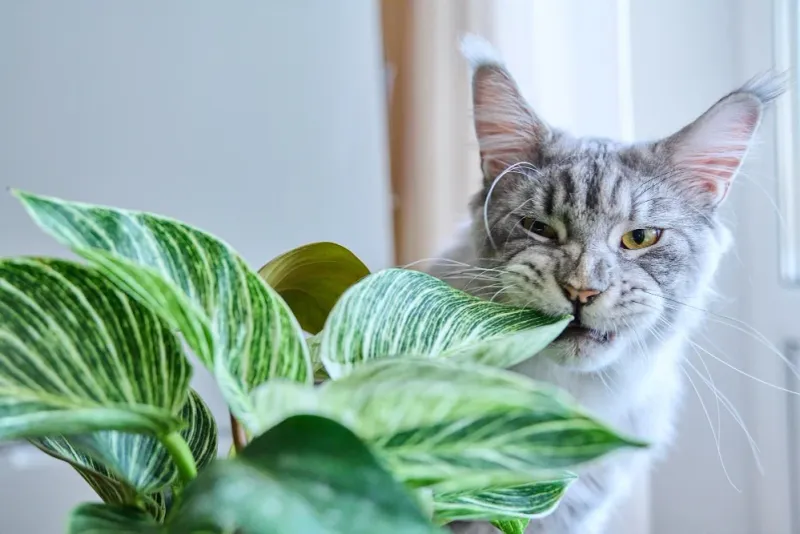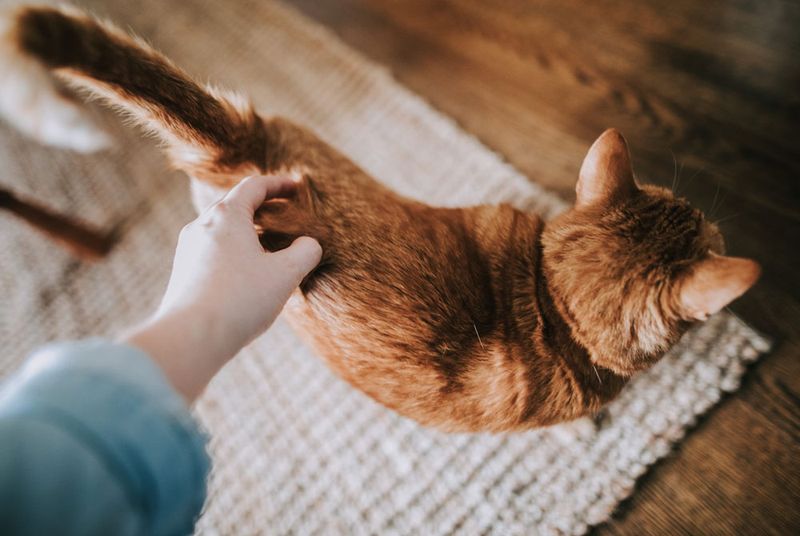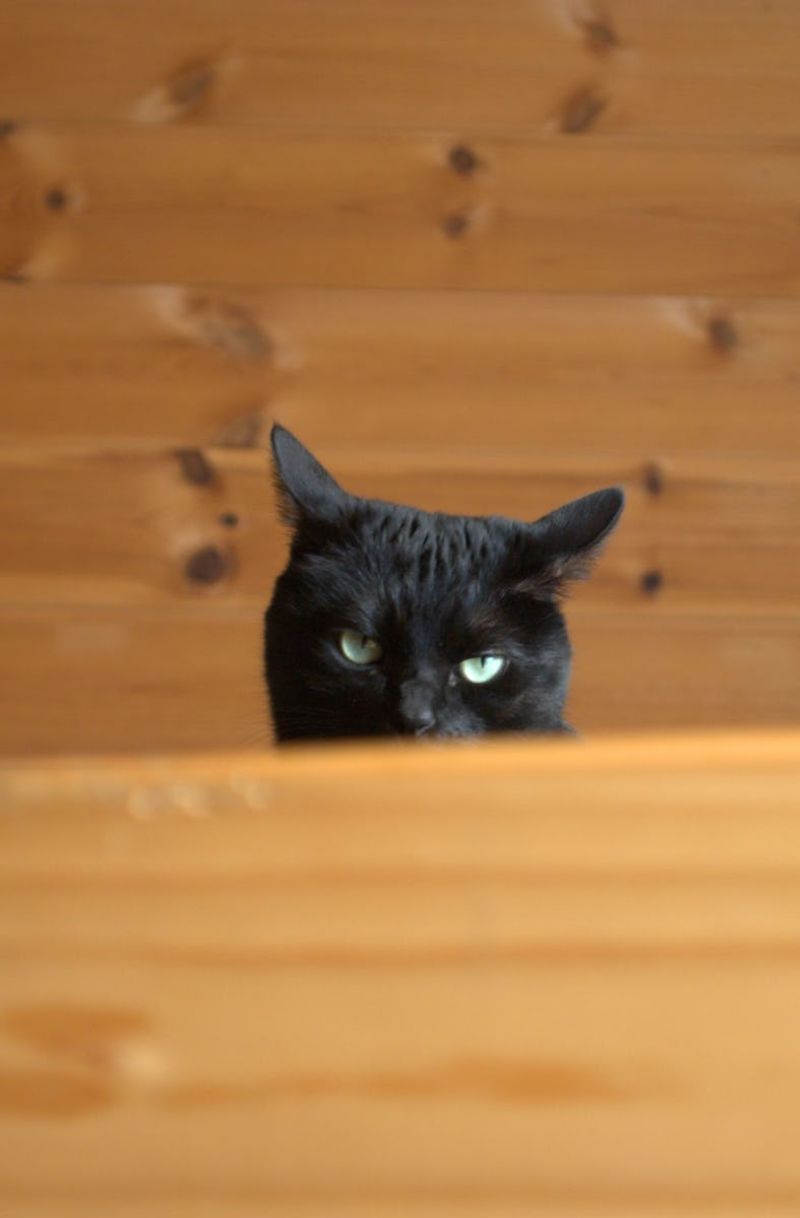📖 Table of Content:
- 1. Destroying Your Furniture (aka Scratching Everything in Sight)
- 2. Climbing on Counters Like They Own the Place
- 3. “Making Biscuits” on Your Belly at 3 a.m.
- 4. Chattering at Birds Like a Tiny Demon
- 5. Launching Stealth Attacks From Behind Furniture
- 6. Burying Poop Like They’re Digging to China
- 7. Going Bonkers in the Middle of the Night
- 8. Squeezing into the Tiniest, Weirdest Spots
- 9. Bashing Their Head Into Yours (with Love?)
- 10. Munching on Your Houseplants
- 11. Random, Twitchy Tail Tantrums
- 12. Staring Into Your Soul for No Reason
If you live with a cat, you’ve likely found yourself muttering “why are you like this?” at least once a day. Whether it’s your shredded couch, midnight zoomies, or the sudden stare that feels like it sees straight into your soul—cats have a knack for doing things that baffle (and sometimes infuriate) us humans. But here’s the thing: most of these quirky, chaotic behaviors aren’t just “cat being weird”—they’re completely natural instincts rooted in their wild ancestry.
While it might be tempting to scold or train away these habits, many of them serve a real purpose in your cat’s physical or emotional well-being. Scratching isn’t mischief—it’s self-care. That late-night chaos? It’s just your furry roommate sticking to a perfectly normal feline schedule. Understanding these behaviors instead of fighting them can actually lead to a happier, more balanced relationship between you and your cat.
So before you swear off cat ownership entirely or invest in your fifth couch cover, take a step back. The behaviors you find annoying might just be your cat’s way of communicating, coping, or simply being their authentic, fabulous feline self. Let’s break down 12 of the most common “bad” behaviors that are actually just cats doing what they were born to do—and why you should lean in instead of lashing out.
1. Destroying Your Furniture (aka Scratching Everything in Sight)
Ah, the notorious couch destroyer! Yes, your cat loves to scratch everything in sight, but this isn’t a vendetta against your furniture. Rather, it’s their way of marking territory and keeping their claws sharp and healthy. In the wild, sharpening claws on trees is vital for survival, and your living room sofa is just the next best thing. Providing them with a scratching post can help channel this instinct while saving your home decor. It’s a natural behavior that also allows them to stretch their muscles, relieve stress, and even communicate with other cats. Embrace it!
2. Climbing on Counters Like They Own the Place
Cats on counters can seem like a hygienic nightmare, but it satisfies their longing for safety and surveillance. In their world, high places offer a safe vantage point to observe their surroundings. Your kitchen counter might be the perfect lookout for spotting potential prey, like birds outside the window. They’re not just being curious; they’re embracing their inner jungle cat. To satisfy their instincts without compromising cleanliness, try offering alternative high places like cat trees or shelves. This way, they can maintain their cat kingdom without invading your kitchen space.
3. “Making Biscuits” on Your Belly at 3 a.m.
When your cat “makes biscuits” on your belly, it can feel like tiny needles massaging your organs. But fear not, this is a gesture of love and comfort. Kneading is a comforting behavior rooted in kittenhood, reminiscent of nursing from their mother. It often signifies trust and affection towards their human companion. Though it may be inconvenient at times, especially during sleep, consider it a privilege that your furry friend feels so connected to you. Some soft blankets can help redirect this midnight massage session. Let it happen; it’s a sign they love you.
4. Chattering at Birds Like a Tiny Demon
Ever heard your cat chattering at birds and wondered if they’re casting spells? This peculiar sound is a blend of excitement and frustration. When a cat sees potential prey they can’t reach, like birds through a window, this instinctual response kicks in. It’s a mix of their hunting instincts and vocal expressions of eagerness. Thinking they’re tiny demons is amusing, but they’re merely expressing their inner hunter’s enthusiasm. It’s an entertaining spectacle that brings out their playful, wild side. Enjoy the chatter; it’s a glimpse into their feline soul.
5. Launching Stealth Attacks From Behind Furniture
Cats are natural predators, and launching stealth attacks from behind furniture is just them practicing their ambush skills. This behavior mimics the hunting techniques they would use in the wild. What seems like a jump scare worthy of a horror movie is actually playtime, predator-style. It’s how they hone their agility, timing, and coordination. Encouraging this playful behavior with interactive toys can satisfy their hunting instincts and provide them with mental and physical stimulation. Let your cat indulge in their predator play; it’s fun for both of you!
6. Burying Poop Like They’re Digging to China
Cleaning up after your cat’s litter escapades might not be glamorous, but this behavior is deeply rooted in their survival instincts. In the wild, burying waste helps hide their scent from predators, showing their cleverness and cautious nature. For them, this digging is an essential ritual. While it may lead to litter being scattered, understanding this instinct helps appreciate their natural intelligence. Using a covered litter box or placing mats around the area can keep the mess contained. Embrace their need to dig; it’s in their DNA!
7. Going Bonkers in the Middle of the Night
Those 3 a.m. hallway Olympics might drive you mad, but for your cat, it’s a normal part of their crepuscular nature. Cats are naturally active during dawn and dusk, prime times for hunting in the wild. Your home becomes their nighttime playground, where they unleash all their pent-up energy. Providing ample playtime during the day can help channel some of this energy. Accept these nocturnal antics as part of their natural rhythm, and maybe invest in some earplugs for peaceful sleep.
8. Squeezing into the Tiniest, Weirdest Spots
Cats love to squeeze into tiny spaces, making us wonder if they’re trying to vanish into thin air. This behavior offers them a sense of security and warmth. Small, enclosed spaces mimic the snug dens they’d find in the wild, providing protection from predators. It’s also just plain cozy. Encouraging this behavior with cat tunnels or boxes can satisfy their need for comfort and security. Celebrate their quirky nesting habits; it’s part of their unique charm!
9. Bashing Their Head Into Yours (with Love?)
A surprise cat-head to the nose might catch you off guard, but this feline gesture is filled with affection and trust. Cats headbutt to mark you with their scent, a sign of bonding and comfort. It’s their way of saying “you’re part of my tribe.” Embrace this adorable act, as it shows their deep connection with you. It might be startling, but consider it a furry seal of approval. Enjoy these tender moments; they’re precious!
10. Munching on Your Houseplants
Worried about your cat turning your houseplants into a snack? This behavior stems from curiosity or a digestive aid. Some cats are drawn to the texture or scent of plants. Others may eat greenery to help with digestion or to induce vomiting when needed. Ensuring your plants are non-toxic and offering pet-safe greens can satisfy this urge safely. Accept their plant-munching ways; it’s part of who they are.
11. Random, Twitchy Tail Tantrums
A twitchy tail might make you think your cat is plotting something sinister, but it’s actually their way of communicating emotions. From excitement to irritation, a cat’s tail movements convey a wealth of information about their mood. It’s their non-verbal language, a way to express feelings without meowing. Learning to interpret these signals can enhance your bond with them. Appreciate their tail talk; it’s a window into their world.
12. Staring Into Your Soul for No Reason
When your cat stares into your eyes, it can feel like they’re peering into your soul. This intense gaze is rooted in observation and curiosity. Cats study their environment and those around them to understand and feel secure. Sometimes, a slow blink accompanies this stare, a sign of affection and trust. Engage with their gaze by offering a slow blink in return. It’s a subtle yet powerful way to communicate love and trust. Let them stare; it’s their way of getting to know you.
